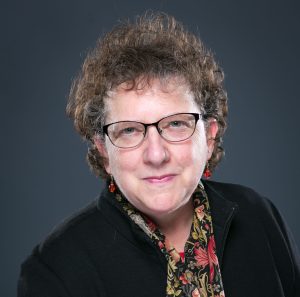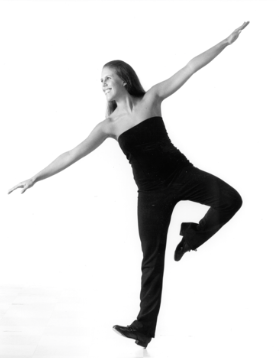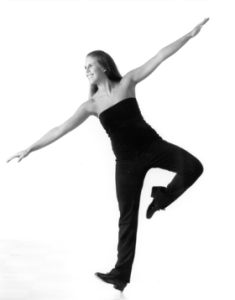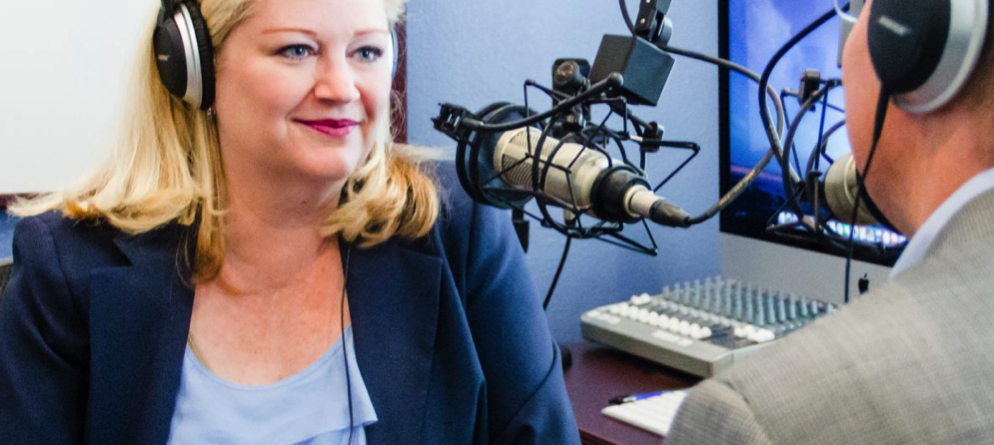
AAC&U 2019: Faculty Centrality in Fulfilling the Promise of LEAP ELOs, HIPs, and VALUE
Faculty are central to implementing ELOs, HIPs, and VALUE rubrics. What roles, supports, incentives, and change processes are necessary to ensure that faculty can create the learning conditions, with fidelity and at scale, for all of our students to succeed?
At AAC&U’s Annual Meeting last week, Natasha Jankowski, director of the National Institute for Learning Outcomes Assessment (NILOA), Rebecca Karoff, associate vice chancellor for academic affairs of The University of Texas System, and Penny MacCormack, chief academic officer of the Association of College and University Educators (ACUE), explored this question.
In case you were unable to attend the session or want to revisit some of the key points, excerpts are shared below.
Rebecca Karoff: Knowing Who Our Students Are
 One of the things we’ve been working hard to do is knowing who our students are, on our campuses and in our classrooms. I want to just think about The University of Texas System as an example. Of course, it’s both typical and exceptional in different ways, but we’re working really hard to shift some of our thinking around, who our students are, what our approaches to student learning are, our organizational structures and the teams, the barriers we may unintentionally put in front of students. And that we really want to make sure we all recognize who we’re teaching so that we teach and serve the students we have now in our classrooms—not the ones we had 10 or 20 years ago, and not the ones we wish we had. We have a very diverse group of students in the UT system.
One of the things we’ve been working hard to do is knowing who our students are, on our campuses and in our classrooms. I want to just think about The University of Texas System as an example. Of course, it’s both typical and exceptional in different ways, but we’re working really hard to shift some of our thinking around, who our students are, what our approaches to student learning are, our organizational structures and the teams, the barriers we may unintentionally put in front of students. And that we really want to make sure we all recognize who we’re teaching so that we teach and serve the students we have now in our classrooms—not the ones we had 10 or 20 years ago, and not the ones we wish we had. We have a very diverse group of students in the UT system.
Many of our students, because they come from low-income and first-generation backgrounds, are going to have some particular challenges that we need to be really cognizant of as we structure and prepare and support our educational environments, and our faculty teaching. For Texas, and I think this is probably true for many of you, the nontraditional student is the new traditional student. There’s no such thing anymore as nontraditional in Texas. Everyone, essentially, is nontraditional. As I said, I think this will be a reality for many across the country if you’re not there already, where you’re just educating some more diverse students and that brings with it a tremendous responsibility and also privilege, to get some things really right for our students.
We’re really trying to focus on finances, advising, and belonging—making sure our students have financial well-being, making sure that they’re getting effective advising, and making sure that they have that sense of belonging, academic and social. We also are trying to support faculty in taking responsibility for student success in key ways at this point: through professional development and through timely and actionable data. Some of the data I just shared are a kind of broad overview of the Texas system. We’re trying to get data in the hands of faculty that they can use and make actionable. We’re also doing a wonderful pilot project with ACUE that you’re going to hear a little bit more about from Penny, so that we can help faculty just feel much more comfortable with their pedagogy. We know that some faculty will come in really well trained to be teachers, but we also know some don’t get that training in graduate school.
We also know we have a lot more to do. We have to do more to support faculty to be more equity minded and take that assets-based approach towards their students.
| What to read next: Q&A with Rebecca on the shared responsibility for student success |
Penny MacCormack: Putting Faculty at the Heart of Student Success
Faculty are key. Faculty are central without any question. They are the folks who interact with the most students.  Compared to anyone else on campus and online courses, faculty have the most interactions with the most students and the most time with students. On average, a student will spend 1 hour with their advisor and 200 hours with faculty in a given semester. What we’re focused on is making sure that that understanding gets operationalized—that faculty are not left out of the student success agenda.
Compared to anyone else on campus and online courses, faculty have the most interactions with the most students and the most time with students. On average, a student will spend 1 hour with their advisor and 200 hours with faculty in a given semester. What we’re focused on is making sure that that understanding gets operationalized—that faculty are not left out of the student success agenda.
Most of us, not all, most of us had little or no training in teaching. Being clear about the outcomes, making sure students are connected with the instructor, motivated, experience a sense of belonging—you are not born to do those things. You can have a rough idea, but ultimately we patchwork together what we do. We get practice in a workshop, a session that we attended, and we patchwork something together. So for us, what we wanted to do was to develop courses in effective teaching practices. We wanted to make sure that when faculty took those courses, they were a comprehensive foundation of the concept knowledge that faculty need to be effective in a college classroom, and that our certificate would be meaningful. We wanted a meaningful certificate, and we wanted to make sure that all faculty would continue to be supported after they finish the course, to continue learning, continue practicing, continue thinking about instruction, because it’s not one thing and now I’m done, I’m all set.
Faculty are required to implement a new practice to complete every single one of 25 modules. That doesn’t happen at the end of the workshops. I’ve designed a lot of workshops. You hope and then pray they will do something, but you don’t know. Our faculty are required to implement and to write a reflection of that experience. I used to talk about all these things in the same excited way I am now, and people were like “That’s really lovely, but will faculty do it?”
They will. Ninety-six percent of our course-takers say the course is relevant. Eighty-seven percent would recommend it to a colleague. Ninety-four percent say it helps fine-tune and helps them get better at teaching. Okay, so they liked it. Are they doing anything? A typical faculty graduate who has the certificate has reported to us, on average, they learn 55 new practices, they learn more about 71 practices. They implement 28 practices, 28 evidence-based practices. Faculty changed what they’re doing in their classroom. They report wanting to implement 28 more, and we make sure they’ve got the course available to them so they can. Everyone likes that. But people were like, “Wait a minute. What about the students?” I’m so psyched to share that we do an efficacy study with every single partner that we partner with, and we have evidence of student impact.
To read our efficacy studies, visit https://acue.org/impact/efficacy-studies-reports/
Natasha Jankowski: Making Our Work Intentional and Transparent
It can’t be by happenstance that our students get to have these experiences. It needs to be intentional. It needs to be  written large and that’s really hard. Not all institutions have an office of assessment to help or set up a future of learning to engage in these conversations, and so we really need some sort of wide, sustainable approach to get into these parts. Five takeaways for faculty align really nicely with the points Penny had up on the elements in the curriculum, and one of them is transparency. We spend so much time on intentional design, and then we tell no one, right? Or it’s in a report that’s archived somewhere [until someone asks] “Why are you asking me to take this class? What am I supposed to get out of it?” So thinking about transparency in terms of knowing why I’m asking you to do this, and where you’re going to go with this, and how it’s going to be applied—then this is a team sport, right? We’re running a marathon here or a relay, so I’m passing students to you. You’re picking them up. You need to know what I’m doing so you’re prepared for them when you’re coming in, so this is the staff developmental process. It can’t just be me on my own because I’m interested and I find it great. If we want to see that impact at scale, we have to be doing this collaboratively.
written large and that’s really hard. Not all institutions have an office of assessment to help or set up a future of learning to engage in these conversations, and so we really need some sort of wide, sustainable approach to get into these parts. Five takeaways for faculty align really nicely with the points Penny had up on the elements in the curriculum, and one of them is transparency. We spend so much time on intentional design, and then we tell no one, right? Or it’s in a report that’s archived somewhere [until someone asks] “Why are you asking me to take this class? What am I supposed to get out of it?” So thinking about transparency in terms of knowing why I’m asking you to do this, and where you’re going to go with this, and how it’s going to be applied—then this is a team sport, right? We’re running a marathon here or a relay, so I’m passing students to you. You’re picking them up. You need to know what I’m doing so you’re prepared for them when you’re coming in, so this is the staff developmental process. It can’t just be me on my own because I’m interested and I find it great. If we want to see that impact at scale, we have to be doing this collaboratively.
Another one is thinking about those pedagogical approaches, those evidence-based practices that we know really make a difference, and thinking about how to invite them in the spaces within. The self-regulation in alignment is another one, which is if we can’t also involve our students in this to help teach them how to learn, to think, to be able to go forward and do this. There’s a lot of times when we hear institutions or faculty within say things like, “I wish I could, but our students just can’t do that.” And I’m like, “Tell me why. Did you try?” And they just say something like, “No, I just don’t think they can.” And I say, “Well, if you don’t think they can, now that’s different, right?” Thinking about and having to apply and try things out really helps with that self-regulation piece and alignment—putting this all together so that it’s not just that one experience that was really great, but it’s a consistent amount of experiences over time.
How do we get there, to this integrated supportive space? On the one hand, we need everyone to be on board and part of this conversation. We need everyone to be enabled to help our learners. I use that in a very intentional way because we have a lot of blocks that we put up for well-intentioned folks that want to help our students and engage in that. I love this concept that Tom Angelo talks about, about learning traps. It is this idea that we created this environment and that there is no way we can get through it without running into it because it’s intentional. You cannot escape from it without having learned the things that you want. It’s not just by happenstance that you get such an engaged faculty member who’s being innovative in their practice; it’s by design that you will have these. It’s equity of learning experience. It’s not just the select few who get it; it’s for everyone who comes through our doors, which requires actions for broad-scale faculty professional development ideally driven by evidence-based practice.
| What to read next: The Fractal Educator, coauthored by Natasha Jankowski |








